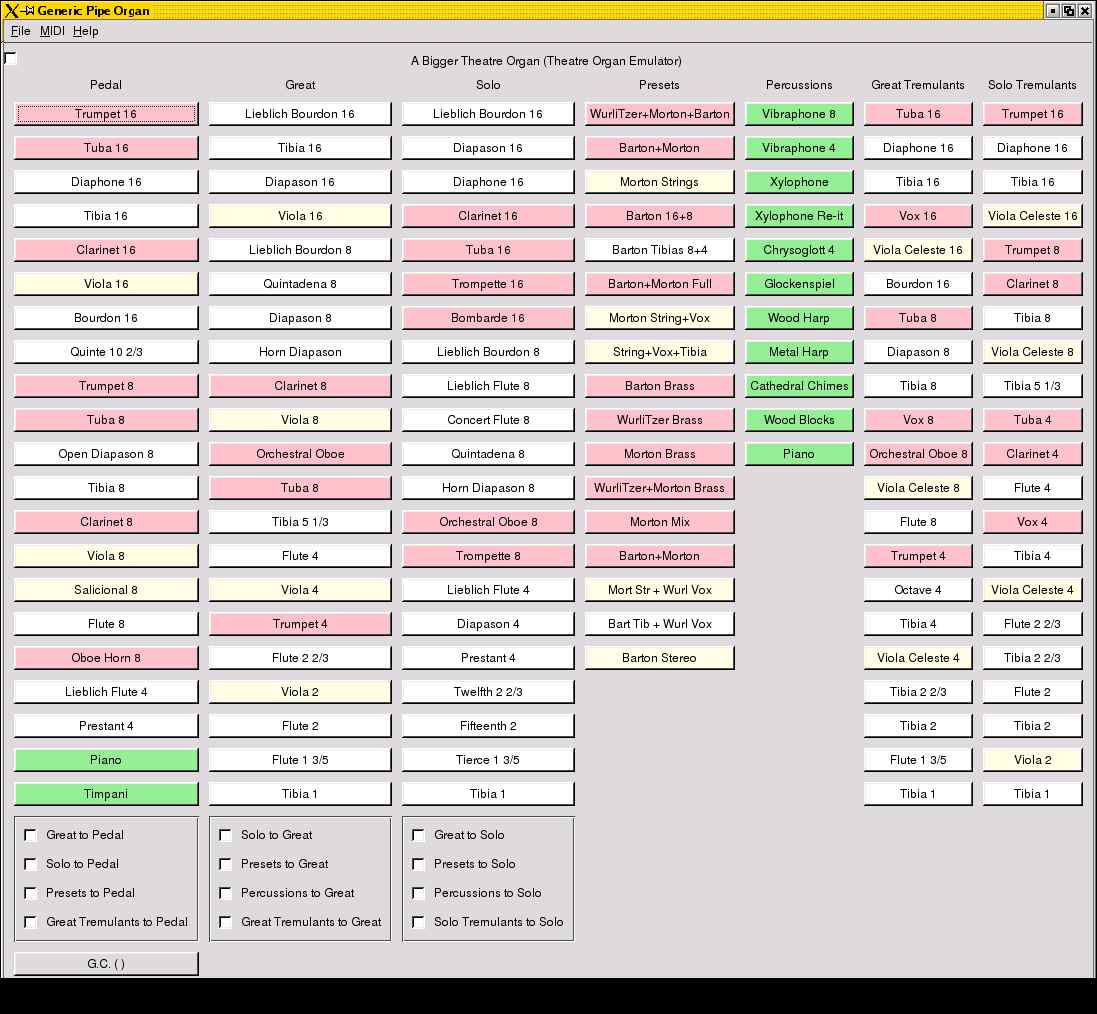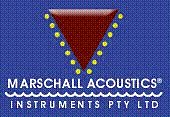Semi-Custom Digital Audio Workstations
A digital audio workstation that can
be connected to MIDI organ consoles
and is capable of simulating large pipe organs, theatre organs, and
'classic
synthesizers' has been developed. It is also has substantial
capabilities
for MIDI composition, arranging, scoring, and rendering in addition to
'ordinary' digital audio recording and audio/video editing.
Now in it's third
generation! The MAI DAW Mk III, read about it here!

During the course of our normal work at Marschall Acoustics Instruments P/L developing sonars and industrial data acquisition equipment , we were evaluating computer plug-in circuit boards containing digital signal processing (DSP) integrated circuits (IC) for use in our GNU/Linux based processing equipment.
The free (as in 'freedom') open source computer operating system Linux and its associated open source (GNU) software tools typically allow hundreds of times better performance than costly heavily advertised proprietary operating systems. Combining this with abundant low cost DSP boards looked very promising for music applications. In particular, existing MIDI organ expander modules looked ripe for replacement by this new technology; most modules and digital electronic organs were quite costly with a limited range of sounds - in particular, theatre organ sounds were a rarity.
The Linux operating system and a number of the associated software packages had to be modified to reduce sound process 'latency' and increase throughput. This is a highly technical area, well documented in Linux kernel, embedded Linux, and professional Linux multimedia development discussion groups and Internet on-line documents. It is substantially similar to work our company does in data acquisition and process control system development for industrial customers. As such, it is straightforward, but somewhat tedious. It should be remembered our objective was to be able to emulate a large pipe organ on relatively modest hardware – not just play back a few samples or achieve capability by throwing expensive hardware at the problem.
Organ sound samples came from around the world. Presently we have samples for something on the order of 1,000 stops! The Linux based digital audio workstation also has the capability to record, edit, and process sound. Its editing and processing capabilities are equivalent to rigs costing many tens of thousands of dollars more. The figure above depicts just one package available for audio and video editing together with a simple sound control interface.
No serious electronic music studio would be complete without a highly integrated music editor, arranger, scorer, and MIDI renderer. Our Linux digital audio workstation uses the 'Rosegarden 4' package compiled and optimized for our particular hardware. A screen shot of one of the many modes is shown below. The features of this amazing product of international collaboration and cooperation go far beyond the scope of this web page. It can, of course, take MIDI data input streaming live from the manuals and pedals, record it, display as tablature, and allow one to edit it. As 'Rosegarden' uses the 'Lilypond' music notation system, the displayed and printed output is gorgeous, reminiscent of fine European intaglio printed tablature.

Some giant sound libraries are contained in the digital audio workstation. Together with a purpose made MIDI renderer (that does not display tablature) the workstation is capable of rendering a full size orchestra with a quality virtually indistinguishable from the real thing.
A screen shot of our Theatre Organ Emulator employing the Generic Pipe Organ (GENPO) is displayed below. A number of notable features are:
-
The Pedal, Great, and Solo divisions are straight (without tremulant). They do use some sounds from church organs as good theatre organ samples are hard to come by, and the practice of throwing a few church pipe ranks into a theatre organ was fairly common.
-
The individual tremulant stops are in their own division. 'Floating' divisions without corresponding fixed manuals are not unknown on both large theatre and church organs so the practice is not without historical precedent. It also overcomes the modern technical problem of accurately reproducing pipe organ tremulants, which are amazingly complex creatures.
-
The percussions are their own division. The instrument sounds are probably better than that on a typical theatre organ - for example, our piano samples are from a Steinway concert grand.
-
The preset division consists of (generally loud) combinations from Wurlitzer, Barton, and Morton theatre organs. They help capture the richness and nonlinearity of big theatre organ combinations. Pipe organ combinations are not merely the sum of the individual stops. The bigger the combination, the bigger the difference between the actual 'real' pipe organ result and the simple sum of the individual stop sounds. This is an area where even some very expensive well known brands of digital electronic organs fall over; the combination sample preset division goes a long way toward achieving a more authentic sound.

Although there are still improvements that can be made, such as: better samples for some stops, more divisions, and other odds and ends, the emulated theatre organ fulfills its main design objectives. It replicates the sound of a theatre organ as well as some keyboards costing hundreds of thousands of dollars. It brings the sound of the theatre organ to a large group of organists who would otherwise never or seldom hear such an instrument, let alone be able to play one. And finally, it brings an affordable theatre organ simulator for practice, arranging, and composition, into music studios with existing MIDI keyboards and organ consoles.
It can, of course, also be used to
augment
real pipe organs that happen to have a MIDI interface greatly expanding
their scope. This particular customer example emphasized Theatre
Pipe Organ and Orchestral sounds and functions. The technology is
amenable other forms of MIDI controllers (i.e. drums, wind, and
strings)
and other styles (techno, jazz, rock, new-age, and even just sound
effects).
Examples of a Classical Organ emulator of 147 stops representing over
120
ranks, and a Modern Organ simulator can be seen
here
.
This page describes the Digital Audio
Workstation as it was in the year 2000. It is now in its third
generation! Vastly more powerful, and physically much smaller:
Free downloads of orchestral and theatre organ musical selections produced with the Marschall Acoustics Instruments digital audio workstation are available here .
